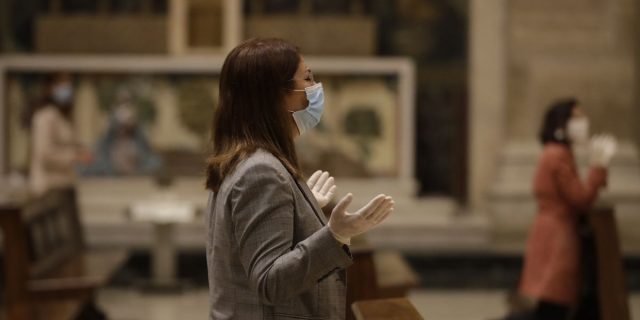America’s churches are starting to reopen.
As the spread of COVID-19 shows signs of slowing and government begins to loosen restrictions for public gatherings, we’re slowly coming out of isolation and resuming normal routines. We can once again eat at our favorite restaurant. Walk in the park. Work out in the gym. Get a haircut.
Best of all, we can come back to church.
But what should we expect when we return?
I believe there are three major expectations that every church will need to wrestle with as they reopen. The fact is that many of the churches that closed in March are significantly different today and congregational expectations that don’t take the changes into account may be surprised by what happens next.
Expect live church to merge with online church
Online worship was the lifeblood of churches during the lock down. Whether through Facebook Live, their website or another platform, the only way for local congregations to stay connected with their own people as well as the larger community was over the internet.
Now that they’re able to return to live worship, many of those churches believe that things will get back to normal and their people will return to their accustomed routines of worship just like every other part of life.
I’m not so sure. Many people in our congregations discovered over the last two months that for all its limitations, online worship has several advantages over live worship at church. For one thing, you can stay in your pajamas, sit in a comfortable chair and drink coffee as you worship. For another thing, online services tend to be shorter, simpler and more user friendly–they have to be because if people get bored they can easily go to another service.
It doesn’t take a great leap of imagination to see how some of the things that made online worship so attractive during the last two months may need to be incorporated into live worship when we return. Services may need to become shorter, for instance.
The shut down also forced churches to move much of their small group ministries online–and like online worship, many people discovered they liked it better than they thought. Seeing people on a computer screen isn’t quite the same as seeing them in person, but you can still talk, listen and study the Bible pretty well. And the convenience is hard to beat.
Online church has more than a few things to teach live church–and wise congregations need not only to incorporate more online opportunities into their overall ministry but also learn how to make their live ministries more engaging.
Expect to give more attention to building community than running programs
A pastor’s group that I’m a part of has been talking for several weeks about priorities in reopening. One side–mainly us older guys from more traditional churches–has been passionate about reopening worship. The younger group of pastors has a different opinion. They think community is more important and believe that at this moment their people need relationships with one another more than they need live corporate worship. I think they’re onto something.
Through the course of the shut down some traditional church leaders have realized a downside of their many programs and ministries. They’ve compromised community within the church even as they’ve reached out to people outside the church. For instance, a woman who might have found community as she served in the children’s ministry would have lost her community when the program closed because of the virus.
And without meaningful relationships people don’t stick with churches.
As our churches reopen we need to find better ways of building real community among our people than simply running programs and hoping people find relationships along the way.
Expect communication to take on a central role in the church’s future
The greatest learning of the last two months may well have been how vital communication is to every congregation, regardless of size, location or makeup. Conditions through the shut down changed so drastically and quickly that the accustomed ways of keeping our congregations informed were exposed not just as inadequate but in many cases downright harmful, as though a garden hose were forced to handle the water pressure of a fire hydrant.
But by “communication” I don’t mean just news. The word really should be understood in the military sense: a clear and secure channel of for sharing the information, resources, and tactics that enable an Army in the field to fulfill its mission.
The shut down gave many of us a glimpse of a Communications ministry that did so much more than just keeping the church informed. It kept the church together; it provided discipling opportunities; it connected all the congregation to church leadership through videos, emails and bulletins; it shared prayer requests; and it kept ministries functioning.
As churches reopen, those lessons won’t be lost and we should all expect to see a much higher priority given to Communications ministries in the future. Indeed, it’s hard to imagine effective churches in the future without Communications leading the way.
For more content like this, follow my Facebook Page, Mike Turner Faith and Family
